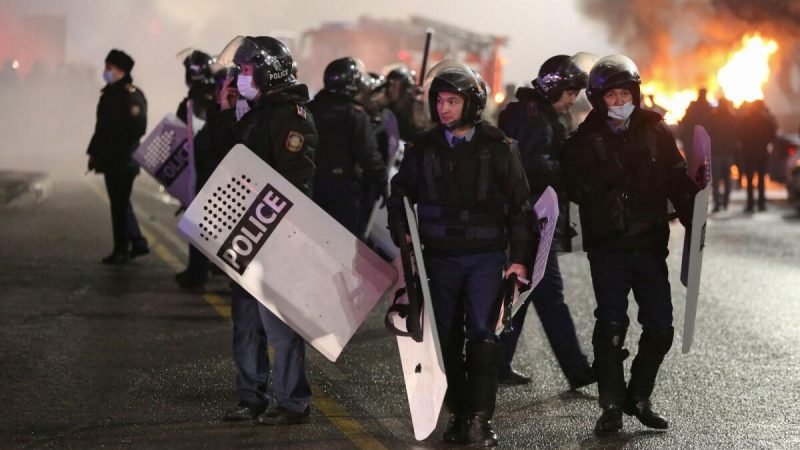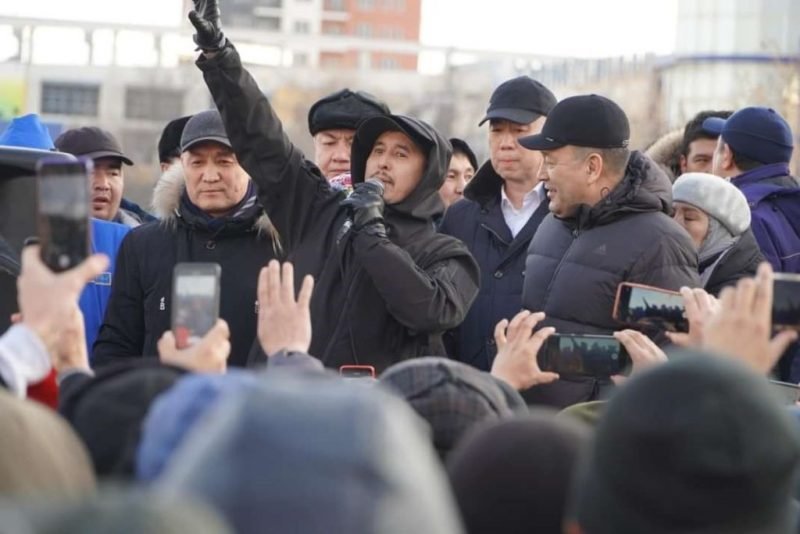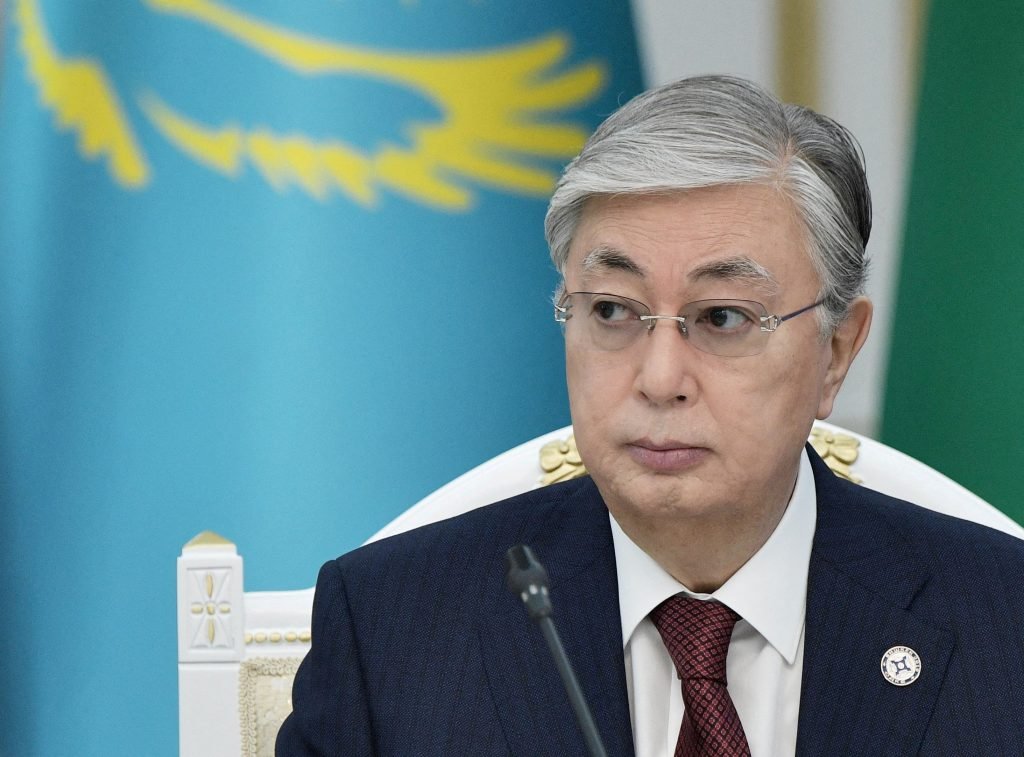Understanding Kazakhstan’s Fuel Price Protests

Kazakhstan became the latest Central Asian republic to witness massive protests against the government. The protests that began on 2nd January in the industrial town of Zhanaozen rapidly spread to major cities, including Almaty, the largest one.
Starting as socio-economic protests, they transformed into violent political protests. By 11th January, the government’s coercive apparatus could contain and suppress the protestors. However, the repercussions of these will be felt across the region.
Background
The demonstrations were triggered due to the rise in the prices of liquefied petroleum gas (LPG) fuel after the government lifted the price caps. Since 2019, the Kazakh government has been transitioning to electronic trading of the LPG so that the prices are market-determined rather than being regulated by the government. The decision to lift the price caps and allow self-discovery of prices that completed the transition resulted in almost double prices.
As most of the Kazakh middle and lower income population had converted their vehicles to LPG-driven, given its cheap, this rise hurt pockets of the majority of citizens. It was exacerbated as the COVID-19 pandemic had increased economic hardship with increasing unemployment, rising inflation, and poor government response on the welfare front.
However, the LPG issue was only a triggering cause. A larger view of the country socio-economic and political landscape points to the fact that discontent with the government has been brewing for a long time. This is why the protests spread rapidly, intensified, and took up the larger cause of political reforms in the country, such as free and fair elections- something the country has not seen since its independence.
After the disintegration of the Soviet Union, Kazakhstan became an independent country, the largest in Central Asia. Communist leader Nursultan Nazarbayev became the President of the country and initiated economic transformation of the country by attracting foreign investment in the oil and gas sector. It developed rapidly through petro-dollars and became the economically most robust country in the region.
However, this economic opening up was not accompanied by political reforms of decentralization and democratization. Nursultan ruled with an iron hand, clamping down on opposition, journalists, and activists. This resulted in fruits of economic growth getting concentrated in a few oligarchs close to the regime. With wealth not trickling down the ladder, economic inequality grew.
In 2019, Nursultan resigned from the presidency and hand-picked his close aide Kassym-Jomart Tokayev as his successor. He, however, continued to maintain a strong grip on the country by getting himself the title of ‘leader of the nation’ and heading the Security Council. Tokoyabev continued in the footsteps of Nursultan and did not initiate any significant political reforms in the system, disappointing the citizens who expected to have a greater say in the country’s governance. The usage of the slogan “Old man leave” shows that they understand that Nursultan is still running the show, benefitting his supporters and not allowing political reforms to take place.
Key developments
The President dismissed the prime minister and dissolved the parliament to conduct fresh elections. Price controls were put again to placate the protestors, bringing prices even lower than those before the price-cap removal. He also removed Nursultan and became the chairman of the Security Council himself to assert his authority.
However, this did not placate the demonstrators, and the protests intensified. Sensing the danger, the President labelled the protestors as a ‘band of terrorists’ backed by foreign governments and NGOs aiming to destabilize the country. He used this to legitimize the use of strong force to suppress the protests and issued ‘shoot without a warning’ orders to the security forces. As the Russia-led Collective Security Treaty Organization (CSTO) alliance member, he invoked the mutual defence clause to ask for ‘peacekeeping’ assistance from other member countries. Subsequently, CSTO forces, mostly from Russia, were deployed in the country to protect important physical assets and installations.
It is important to note that there is only a superficial opposition in the country which remains fearful of the government. Dissident leaders who took exile in foreign countries supported the protestors and called it a revolution that would end the oppressive rule and usher in democracy.
Some scholars focusing on the region have also speculated that Nursultan might be behind the protests to weaken the President as he tried to act independently and sideline Nursultan. What gives credence to this speculation is the arrest of country’s spymaster Masimov, a nephew of Nursultan and his close aide, under the charges of treason.

The Geopolitics
For centuries, Central Asia has been the playground for the Great Game among the world’s major powers and traditionally it has been under Russian influence. So, the geopolitical implications of these protests in the region are hard to ignore.
Kazakhstan has been the most stable country among all the post-Soviet Central Asian states. Instability is likely to make other neighbouring states regimes insecure too, suspecting a domino effect as none has been able to politically liberalize and create democratic institutions of governance.
Kazakhstan borders the Caucasus on one side and Xinjiang on the other. From a sovereignty point of view, these regions are the soft belly of Russia and China. With Afghanistan already unstable, both of these countries cannot have another crisis looming near abroad. This is also why Putin and Xi Jinping have extended full support to the Kazakh government and have praised the Kazakh president for taking decisive action against the protestors.
Also, given that Kazakhstan first dialled Russia for help signifies that it still remains the core political and security guarantor in the region. Though China has the economic heft and invested heavily in the region, it is not trusted by the Central Asian states on political issues. The United States administration expects that the Kazakhstan crisis will detract Russia from Ukraine, where a major confrontation is looking highly likely. However, it might increase the risk of conflict on the Ukraine-Russia border.
Also, economic troubles act as a significant catalyst for religious and ethnic fundamentalism. This might give a push to radical and extremist non-state actors, which may further destabilize the region. The Taliban, Islamic State (Khorasan), Al-Qaeda, etc. are already active in the region and are high on confidence after the US withdrawal from Afghanistan.
The Geo-economics
The region is not only a bridge between Europe and peripheral Asia but is also rich in energy and mineral resources like oil, natural gas, and uranium. Hence, it is a critical transit space as well as a resource provider for major global supply chains. Various companies of Russia (Lukoil), China (China National Offshore Oil Corporation), and the US (Chevron, ExxonMobile) have invested billions of dollars in Kazakhstan’s energy sector. Nuclear power plants of various countries, including India, are fuelled by uranium imported from Kazakh mines.
Disruptions and unrests at various production sites will have consequences for all the nodal countries in the supply chain regarding fuel availability and its net import costs, including insurance costs. It is relatively easy to attack and disrupt critical infrastructure like pipelines even by a lone-wolf attacker.
Instability in the region will also negatively impact various connectivity projects like the Belt and Road Initiative (BRI) and International North-South Transport Corridor (INSTC). These projects will improve cross-continental connectivity and provide a major impetus to the economies of Central Asian countries.

Domestically, violent protests and demonstrations of any scale have never been good for the national economy. In terms of foreign investments, given that the protests have taken place in a country that has been most stable in the region, investors’ confidence will take a dip, at least in the short term. Countries importing from Kazakhstan will try to diversify their basket of suppliers to address the uncertainty about supplies from Kazakhstan. Its rapidly developing but nascent tourism industry might find it difficult to bear the brunt of negative publicity and COVID-19 simultaneously.
Also, there are risks of the formation of a vicious circle. Impact on freedom of movement and logistics increases the cost of transportation, which raises the commodity prices for the consumers. This may increase inflation, further increasing the economic hardships and political turmoil, both internally and regionally.
Conclusion
Though the government has quelled the protests, it has taken the lives of more than 300 people, including security personnel. This will decrease the legitimacy of the Kazakh government even further and may result in another round of anti-government protests and demonstrations. If the government wants to address the root cause of the discontent, it needs to start by taking steps to alleviate the socio-economic miseries of the citizens. It needs to create equal and fair opportunities for the people to participate in the economy and take welfare steps for the weaker strata of the populace.
More importantly, it needs to take steps to create democratic institutions which can provide avenues to citizens to get their voices heard and grievances addressed. In this, conducting the upcoming election in a free and fair manner can provide a starting point. The other countries in the region also need to take protests in Kazakhstan as a warning sign to undertake political reforms and dismantle oligarchic power structures. History tells that polities have faced greater dangers from inside than from outside. Hence, governments will not be able to violently silence the protestors and get away by blaming the ‘foreign hands’.


















